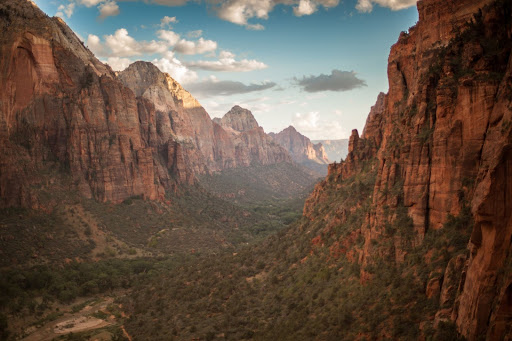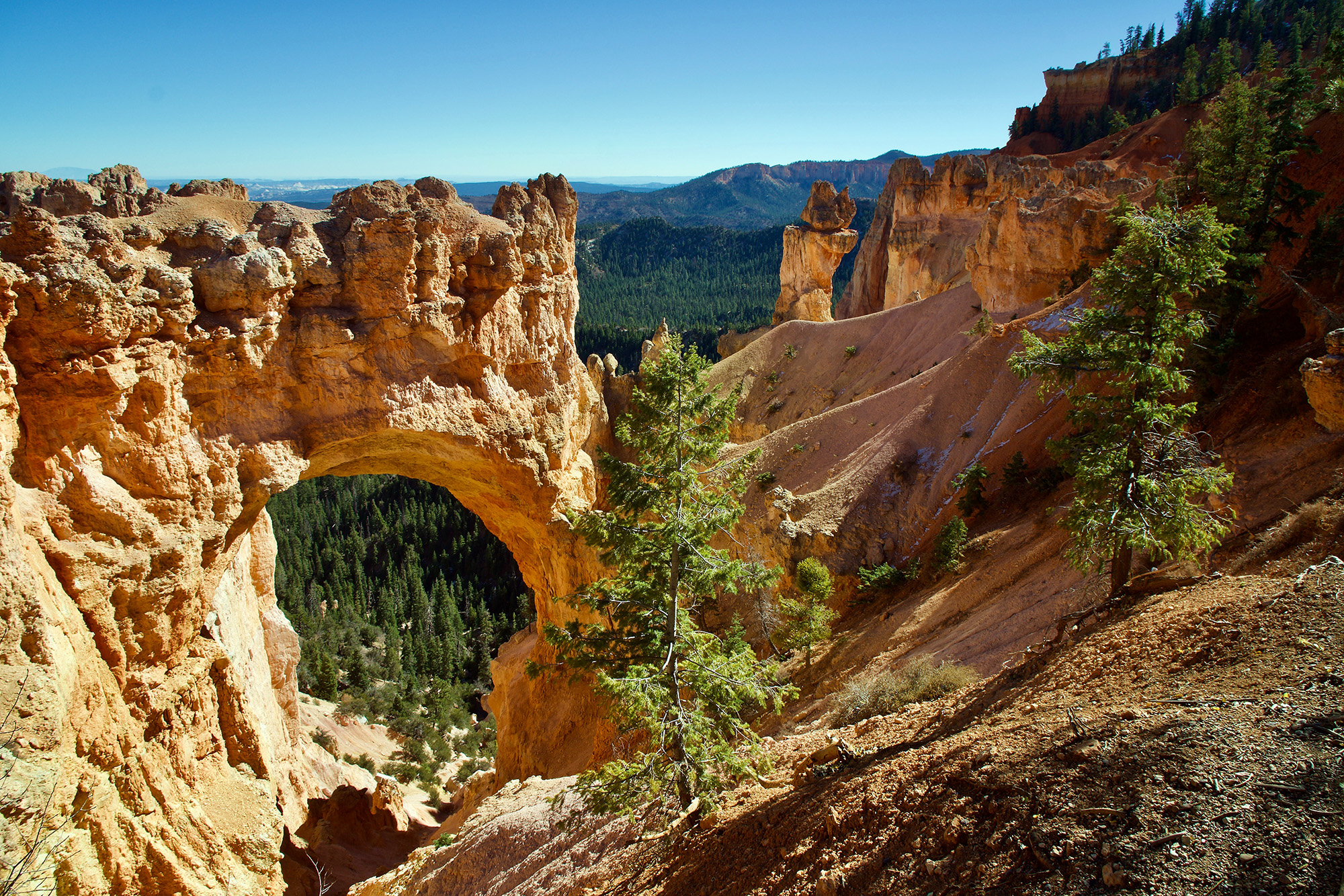There is a wide variety of plants and animals found in Zion National Park. With elevations ranging from 3,700 to 8,700 feet, this national park inhabits over 1,000 species of plants. Varying heights create different habitats within the park. Surrounding areas like the Mojave Desert and the Colorado Basin heavily influence habitats within the park.
Valley Floor
On the valley floor, where both Ferber Resorts’ are located, the Virgin River is the perfect spot for a more lush environment to form. Willow, cottonwood, box elder, and ash trees favor this cooler habitat. Groves of trees create a colorful display during each season. Greens and pastel colors are visible throughout the spring months, but the greens quickly turn yellow and orange in the fall. The lower elevations indulge the fall colors as late as November, and not far behind that, the winter fades the colors to white hues on the canyon walls.
An array of wildflowers are scattered within the meadows on the valley floor. Many plants open during the more moderate evening hours. Scour the grass for some of these native species of wildflowers: Indian Paintbrush, Primrose, and Sego Lily.
The dense Navajo sandstone layers on the canyon walls create the perfect environment for ferns and mosses to thrive. The continuous water flow creates pockets of marshes where cattails and wild grasses tend to grow. These ‘hanging gardens’ are particularly visible on the Emerald Pools or Weeping Rock hikes.
Desert Climates
At lower elevations, more tolerant plants such as brush and cacti grow. These plants have adapted to higher temperatures and learned to store water. As the elevation rises, the arid desert climate becomes a much more lively desert forest. Slow-growing evergreen and juniper trees are cold and drought-tolerant, supporting a different habitat. As the soil changes to sandstone cliffs, ponderosa pine trees cling to the cracks and ledges and cause the face of Zion to erode slowly.
Upper Plateaus
The soil contains sedimentary and volcanic elements in the higher areas of the park, like Kolob Terrace. Ponderosa pines begin to blend with the conifer forest of douglas fir, white pine, and aspen trees. This climate is home to many wildflowers in the summertime, but winters are incredibly harsh. Many of the plants in this area are not as tolerant to the dry heat of the lower climates but are just as brilliant in color.
Be On The Lookout
There are many opportunities to explore the foliage within Zion National Park. Different areas of the park offer varying habitats for an array of plants. Lower elevations tend to cater to a more desert climate. Many of the flora in these portions of the park are very tolerant of the heat, as the temperatures can rise to a blazing 100 degrees in the summer months. Areas in the valley create the perfect, cool spot for lush ‘hanging gardens’ to form. Entering the highest and most spectacular viewpoints in the park offers a wide variety of trees that provide shade and an excellent place for wildlife.
While visiting Zion Camp and La Quinta, located in the heart of Springdale, explore all the habitats hidden within the park year-round. There are so many curiosities to explore while visiting Zion National Park!





